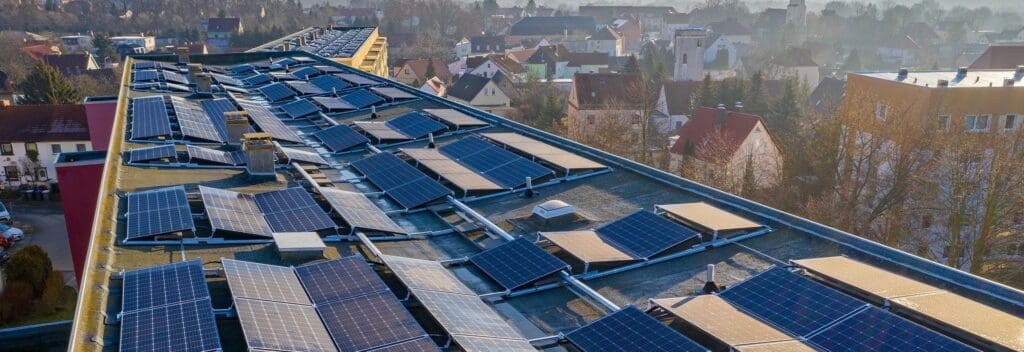On 18 May 2022, the European Commission published its REpowerEU Plan, aimed at intensifying the continent’s energy transition and diversification efforts in the face of the war in Ukraine. Professor Catherine Banet, CERRE Research Fellow and Professor at the University of Oslo, answers a few questions on some of the key aspects of this new package.
What is the European Commission trying to achieve with this slew of proposals, and what are the most salient points in your opinion?
The REpowerEU Plan is the implementation part of the REpowerEU Communication presented earlier this year in March. It contains a series of concrete legislative proposals and policy actions with the overall objective to act on the short-term priority of reducing the EU’s dependence on Russian fossil fuels and the longer-term priority to speed up the energy transition. There is a real sense of urgency behind the Plan that otherwise builds on the processes started by the European Green Deal. It also echoes the call for “European sovereignty” in a series of strategic areas.
The REpowerEU Plan is structured around three main levels of action. For each level, a broad series of intertwined measures is proposed. The first level of action is demand and energy saving. The second is the acceleration of the transition towards more renewable energy within the energy mix of the EU. The third level relates to supply with the goal of diversifying energy suppliers together with reliable partners. This reveals that the so-called “energy trilemma” structured around the security of supply, environmental protection and competitiveness is still valid. Each of the three dimensions of the trilemma might weigh differently over time, but there is a need to keep them in balance and ensure their mutual consistency.
The REpowerEU Plan has many dimensions, with proposals touching upon a wide area of sectors. The most salient initiatives of the Plan can be said to be the recommendation on speeding up the permitting procedure and defining “go-to areas” for renewable energy generation; the proposal to make the installation of solar panels on rooftops progressively mandatory, first for new public and commercial buildings, and then for new residential buildings; the establishment of a joint purchase mechanism for gas and hydrogen, linked to the “EU Energy Platform”; the large scope of investment instruments proposed, such as the set-up of carbon contracts for difference to support the increased use of green hydrogen by the industry or the encouraged use of fiscal measures to promote energy savings.
Further, two additional considerations appear clearly in the Plan and in the discourse from the European Commission and may be stronger than before. First, it is obvious that no Member State can tackle the challenges ahead on its own, and therefore existing solidarity mechanisms must be activated and reinforced. Indeed, we have seen an underlying tendency to advocate for the prioritisation of national demand in some countries, grounded in security of supply considerations, with the risk of altering the further integration of the internal energy market. Second, the Plan reveals that the European Green Deal must be accompanied by a strategic external dimension, oriented toward international collaboration with trusted partners. It is not surprising that an EU External Energy Strategy accompanies the REpowerEU Plan, and that the High Representative and the European Commission adopted a Joint Communication on a ‘Strategic Partnership with the Gulf’ on the very same day. Close cooperation with Energy Community members is also emphasised.

As you underlined, there is a significant effort on scaling up renewables and a standalone solar strategy. How will such initiatives affect the revision of REDII and other Fit for 55 files, and what are the existing challenges?
The REpowerEU Plan calls for an acceleration of the roll-out of renewable energy to complete the energy transition and to replace the use of fossil fuels in final uses, contributing to the further reduction of dependence on energy supply from Russia. This means building more renewable energy generation capacity, building it quicker and ensuring wider integration of renewable energy sources into final energy uses. The steering objective proposed by the European Commission is to further increase the 2030 EU target of renewable energy sources in final energy consumption from 40% to 45% by 2030. This targeted increase represents an important scale up from the original target of 32% defined in the recast Renewable Energy Directive (EU) 2018/2001 (RED II), to the proposed revision as part of the Fit for 55 package with a target of 40%, and now 45% in the REpowerEU Plan.
The REpowerEU Plan comes only 10 months after the publication of the Fit for 55 Package in July 2021 which includes a revision of the recent recast Renewable Energy Directive. The most efficient solution would be to integrate the two processes, and therefore the European Commission is amending its proposal on the revision of the Renewable Energy Directive. The same applies to proposals to revise eco-design and energy labelling requirements.
The European Commission has identified a series of sectors where renewable energy technologies deployment can be sped up, namely solar, heat pumps, wind and electricity storage. This is supported by the ambition of developing strong supply chains for these technologies, based on collaboration between the Member States. This includes new regulatory eco-design and energy labelling requirements that resonate with previous initiatives on circular economy and strategy for raw materials. Member States can join efforts and develop Important Projects of Common European Interest (IPCEI). The European Commission also proposes promoting electricity storage assets by defining them as being of “overriding public interest”.
Some of these measures, notably the adoption of a new strategy on solar PV, were announced before the REpowerEU Communication, but they fit very well with the objective of the latter as it reinforces local renewable energy generation, consumer empowerment and independence towards imported fossil fuels. The most salient measure proposed is a legally binding EU solar rooftop obligation, first for new public and commercial buildings by end of 2026 (buildings with a useful floor area larger than 250 m2) and then for all existing public and commercial buildings by end of 2027 (an area larger than 250 m2 too), and then for all new residential buildings by end of 2029. To not create a new dependency on imported goods and put pressure on critical raw materials, it is fundamental that this goal is supported by a supply chain strategy and circular economy models where recyclability and substitution of critical raw materials are addressed.
The potentially most controversial part in practice is the proposal to speed up permitting rules for wind power through the definition of “renewables go-to-areas”, both on land and at sea. With current local opposition to the further development of wind power generation onshore, such an approach may prove to be challenging to apply to national governments without provoking further opposition. Meanwhile, it could be an effective mechanism in areas with less conflict. One should note that the deployment of electricity storage assets should also enable permitting rules. The Commission Recommendation for speeding up permit granting procedures and facilitating power purchase agreements is less problematic because it is not legally binding and promotes best practices. It completes the ongoing work of the Technical Support Instrument.
Likewise, it may be asked whether the EU proposals can be implemented quickly enough to mitigate the upcoming supply disruptions. An example of this is the still remaining, important work to be performed on energy efficiency and energy savings. The implementation of the measures identified in the EU Renovation Wave Strategy, including the revisions of the Energy Performance of Building Directive and Energy Efficiency Directive, will take time.

The package includes a Communication on short-term intervention and long-term improvements to electricity market design: what are the Commission’s proposals and what does it mean for the single energy market?
The high energy prices experienced since the fall of 2021 and the supply risks for imported natural gas from Russia have reinvigorated the debate on electricity market design, where two groups of Member States have had opposing views depending on whether one sees the energy price crisis as a structural or conjectural matter. One group of Member States (incl. France, Italy, Spain, and Romania) has been advocating for structural reform of market design legislation, while the other group (incl. Germany, Denmark, Finland, and Austria) has been defending the current model and the need to preserve the current dynamics and price formation mechanisms.
ACER published an assessment report in April 2022 that concludes that the current wholesale electricity market ensures efficient and secure electricity supply under “normal market conditions” and should therefore be kept. It puts forward some proposals in terms of “improvement” of market design, with the aim to reinforce the resilience of electricity markets and their actors (notably producers, suppliers and consumers), but no fundamental structural changes.
In its Communication on Short Term Energy Market Interventions and Long Term Improvements to the Electricity Market Design, the European Commission also advises in favour of short-term, temporary national measures mostly for retail markets, and identifies some possible “improvements” for “an optimal future functioning of the market”. The EU proposed actions can be split into two categories: (i) price formation transparency, for better protection of consumers, with new obligations for suppliers and more transparent wholesale, and long-term markets; and (ii) behaviour and flexibility, for more responsive energy systems (demand response, prosumption, digitalisation), and reinforced cooperation between the Member States and infrastructure operators.
Catherine Banet (PhD) is a Professor at the University of Oslo, Faculty of Law, Scandinavian Institute of Maritime Law, Norway. Her fields of expertise include energy law, environmental law, competition law and EU/EEA law. Her research focuses on renewable energy, support schemes and alternative financing models, energy market design, energy infrastructures regulation, climate change mitigation measures, including carbon capture and storage (CCS).


